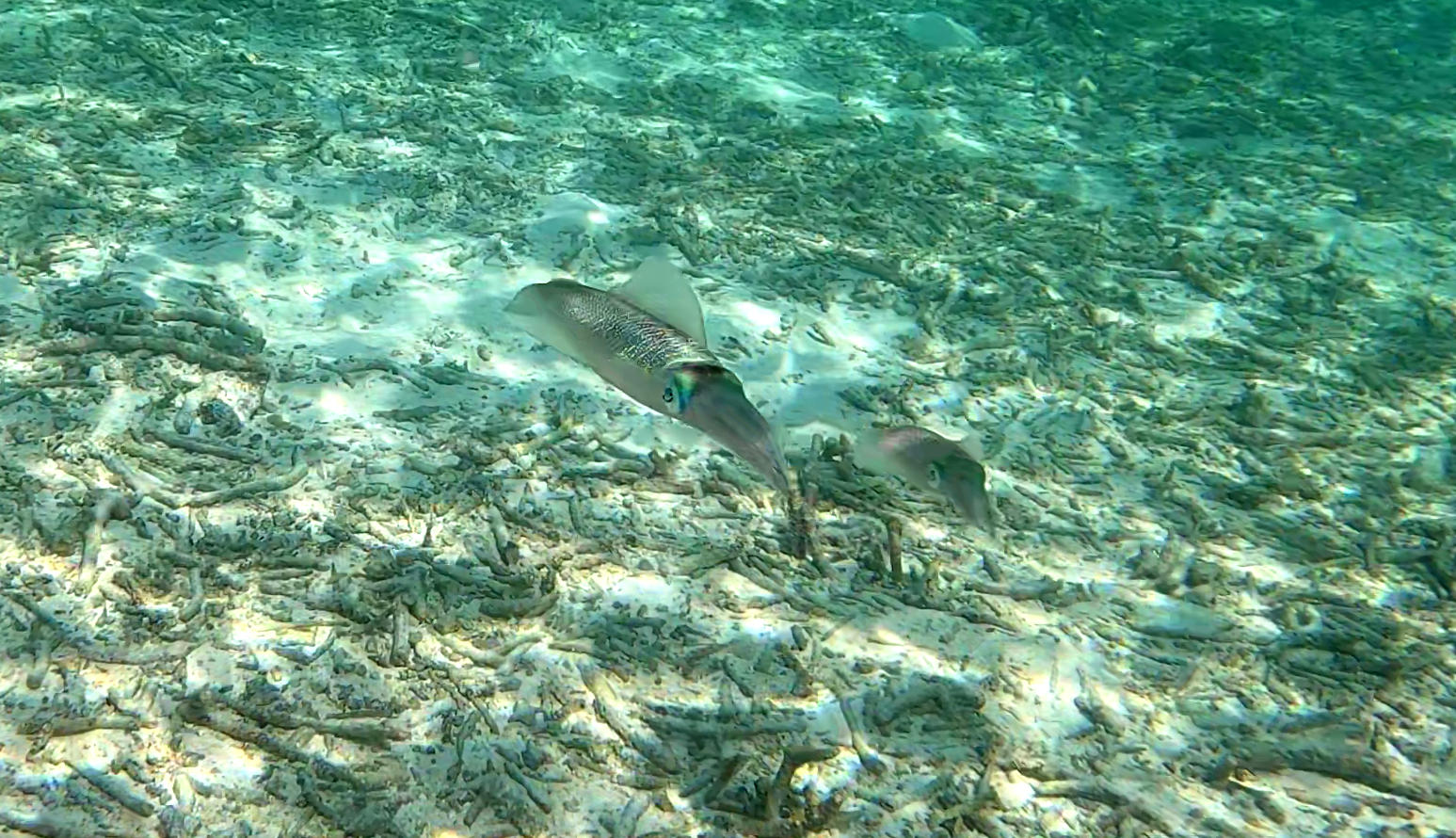Bigfin reef squid - Sepioteuthis lessoniana
Sepioteuthis lessoniana, commonly known as the bigfin reef squid, glitter squid or oval squid, is a commercially important species of loliginid squid. It is one of the three currently recognized species belonging to the genus Sepioteuthis. in 1993, however, have indicated that bigfin reef squids may comprise a cryptic species complex.

The species is likely to include several very similar and closely related species. Bigfin reef squids are characterised by a large oval fin that extends throughout the margins of its mantle, giving them a superficial similarity to cuttlefish. They are small to medium-sized squids, averaging 3.8 to 33 centimetres in length.
They exhibit elaborate mating displays and usually spawn in May, but it can vary by location. The paralarvae resemble miniature adults and are remarkable for already having the capability to change body colouration upon hatching. Bigfin reef squids have the fastest recorded growth rates of any large marine invertebrate, reaching 600 g in only four months. They are a short-lived species, with a maximum recorded lifespan of 315 days. il calamaro di lesson

The diet of bigfin reef squids comprises mainly crustaceans and small fish. They are found in the temperate and tropical waters of the Pacific and Indian Oceans, and have recently been introduced into the Mediterranean as a lessepsian migrant. They are commonly found near the shoreline, near rocks, and coral reefs.
They are fished in vast quantities for human food in Asia. Because of their rapid growth rate, short life span, and tolerance to handling and captivity, bigfin reef squids are regarded as one of the most promising species for mariculture. They are also a valuable source of giant axons for medical research. Bigfin reef squid is a neritic warm water-dwelling squid.
They are usually found 0 to 100 m. below the water’s surface. They tend to remain close to the shoreline, near rocks and reefs. They are slightly more active during the night and will move to deeper waters or find cover in daytime. Large numbers of juveniles can often be found hiding beneath floating driftwood.

Bigfin reef squids are one of the most commercially important squid species, and are widely consumed as human food. They are usually caught in large numbers by trawling, seine fishing,or fixed net traps. In small-scale fishing, they are caught by jigging, drive-in nets, slingshot-driven spearguns, or with squid pots. Fishing operations for bigfin reef squids (particularly in jigging) are usually done at night and utilise bright lights, taking advantage of their attraction to illumination.

They are especially abundant during the full moon and foggy weather. Populations of bigfin reef squids are not seasonal, and they can be fished throughout the year. They are also used as fish bait in hook and line fishing. Because of their rapid growth rate, short life span, and tolerance to handling and captivity, bigfin reef squids are regarded as one of the most promising species for mariculture. Although there have been several studies about this, there have been no reported commercial-scale cultures, as of 2011.
(extract from Wikipedia)
Gallery
Video Gallery
